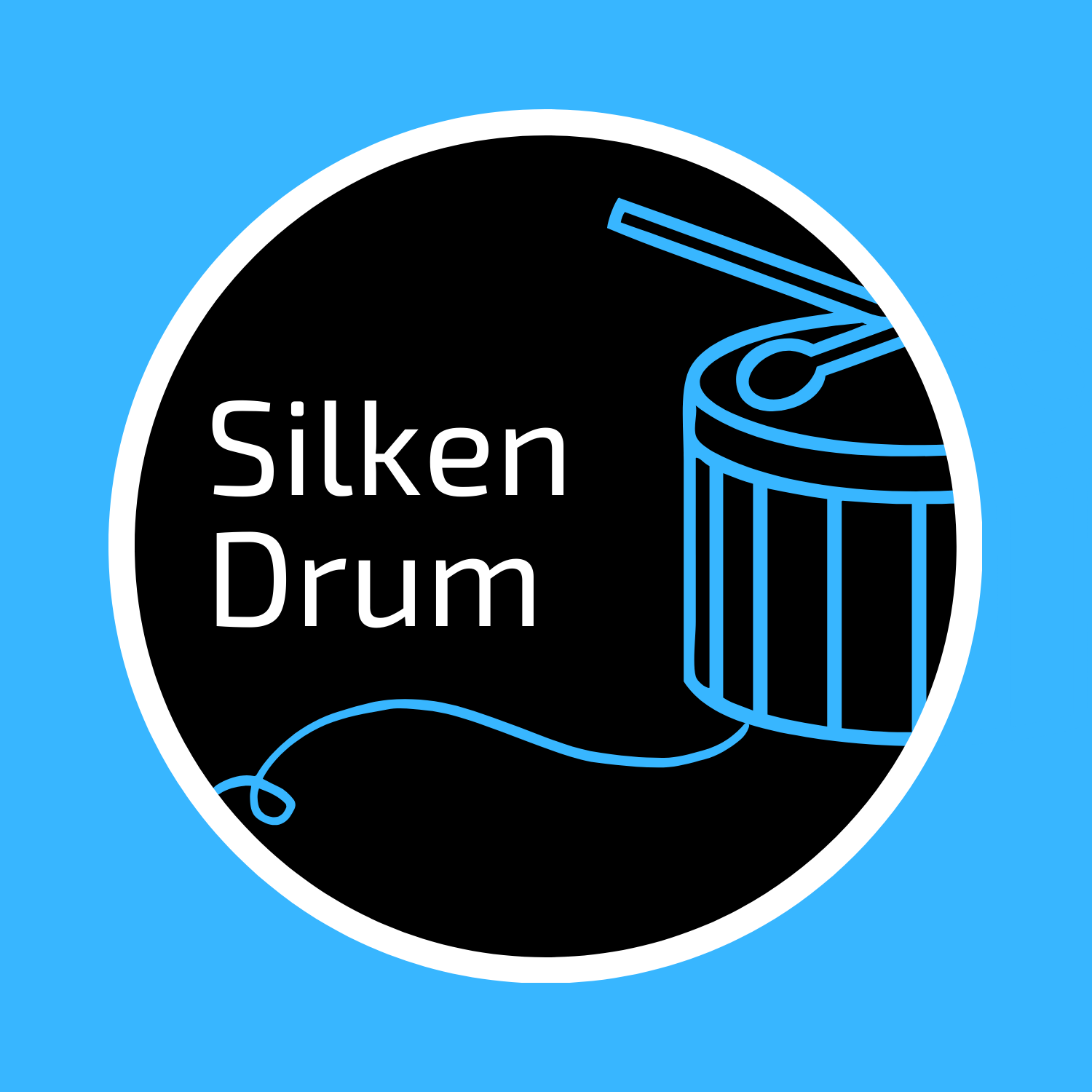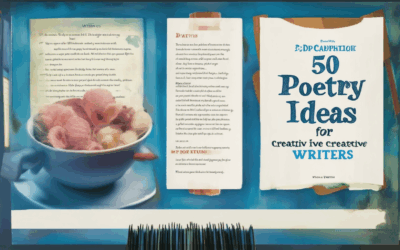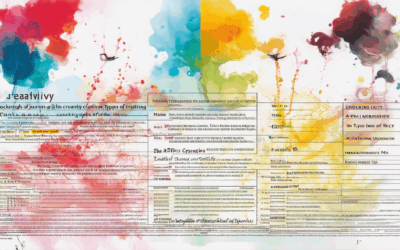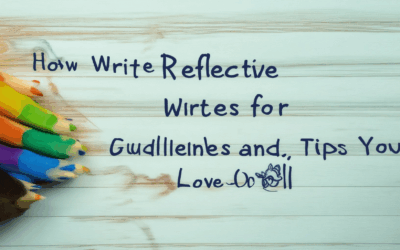Unlocking the boundless potential of creativity is a journey that often begins with a single spark of inspiration. For writers and creatives seeking to harness their imaginative powers, poetry stands as a timeless medium that transcends mere words, offering a canvas for self-expression and exploration. Whether you’re a seasoned poet or someone just dipping their toes into the world of verse, discovering the right poetry ideas for creatives can be a game-changer. This guide delves into a treasure trove of poetic inspiration, designed to ignite your creativity and provide a roadmap for crafting compelling verses. From short poetry ideas to innovative poetry prompts, we’ll explore how to unlock your creative potential and craft poems that resonate long after they’re read. Let’s embark on this artistic journey together, where every word is a step toward unlocking your true creative spirit.
Key Takeaways
- Craft a catchy poem by starting with a single impactful word that grabs attention and sets the tone.
- Paint vivid imagery in your opening lines to transport readers to a new world.
- Invoke emotion directly to connect with readers on a deep level.
- Adopt an observer’s stance to offer a neutral yet intriguing perspective.
- Use a name or pronoun to create a personal connection and invite readers into your narrative.
- Set the scene with a specific place to immerse readers in a particular environment.
- Experiment with poetic forms like haikus or sonnets to find creative structure.
- Consider rhythm and rhyme to enhance readability and engagement.
- A great first line combines imagery, emotion, and surprise to captivate readers.
- Choose a poem starter that evokes emotions and sparks curiosity, whether through nature, everyday objects, or abstract concepts.
These takeaways encapsulate the essential strategies for crafting compelling poems, ensuring your work captivates and resonates with readers.

What Makes Good Poetry in Creative Writing?
Good poetry in creative writing is defined by its ability to evoke emotion, tell a story, and leave a lasting impression. Here are the key elements that make poetry stand out:
- Imagery and Metaphor : Effective poetry uses vivid imagery and metaphors to paint pictures in the reader’s mind. These elements transform abstract concepts into relatable scenes, making complex emotions more accessible.
- Rhythm and Flow : The musicality of words is crucial. A poem’s rhythm and cadence guide the reader’s experience, creating a natural flow that enhances the storytelling.
- Structure and Form : While free verse is popular, many poets opt for traditional forms like sonnets or haiku. These structures provide a framework that adds discipline and uniqueness to the work.
- Emotional Depth : Great poetry connects deeply with readers, often exploring themes like love, loss, identity, or existence. It resonates on a personal level, sparking introspection.
- Originality and Voice : Unique perspectives and fresh takes on familiar themes set poetry apart. A distinct voice helps readers identify the poet and adds authenticity to their work.
- Simplicity and Clarity : While poetic devices like symbolism are powerful, clarity is key. Overly complex language can obscure meaning, risking disconnect with the audience.
- Community and Inspiration : Sharing poetry with others fosters growth and feedback, helping writers refine their craft. Platforms like Silken Drum provide spaces for creativity and connection.
By balancing these elements, poets create works that are not only artistically rewarding but also deeply meaningful to readers.
How to Make a Poem Creative
To craft a creative poem, consider the following techniques and strategies:
1. Experiment with Structure
- Break your poem into stanzas to create visual separation and enhance rhythm.
- Use line breaks strategically to emphasize key words or ideas.
2. Engage Your Senses
- Incorporate sensory details like sight, sound, touch, taste, or smell to create vivid imagery.
- Show, don’t tell, by painting scenes that evoke strong emotions or memories.
3. Utilize Metaphors and Similes
- Compare concepts creatively to add depth and uniqueness to your poem.
- Choose metaphors that resonate personally or culturally to make your poetry more relatable.
4. Explore Unique Themes
- Write about unconventional subjects or perspectives to stand out.
- Draw inspiration from personal experiences, observations, or imagination.
5. Play with Language
- Use unexpected words or phrases to challenge traditional poetic norms.
- Experiment with alliteration, rhyme schemes, and meter to create interesting sounds.
6. Edit and Refine
- Revise your poem to remove clichés and strengthen your voice.
- Consider feedback from others to gain new insights and improve your work.
7. Join Writing Communities
- Participate in platforms like Silken Drum to connect with fellow writers and receive constructive criticism.
- Engage in workshops or poetry groups to inspire new ideas and techniques.
8. Stay Curious and Explore Resources
- Read diverse genres of poetry to expand your creative horizons.
- Study the works of established poets to learn from their unique styles and approaches.
By embracing these techniques and continuously exploring new possibilities, you can create poems that are original, meaningful, and deeply personal. Remember, creativity is about experimentation and growth, so don’t be afraid to take risks and evolve as a writer.

Best Topics for a Poem
Choosing the right topic for a poem can be a challenging yet rewarding process. Here are some excellent ideas to inspire your next composition:
- A Day in My Life
- Morning at the Lake
- The First Time I Felt Love
- The Enchanted Forest
- My Journey Through Adolescence
- The Legacy of the Titanic
- Grandma’s Wisdom
- The World Where Dreams Are Real
- The Struggle for Equality
- Autumn Leaves Falling
- My Adventure in the Mountain
- A Perfect Day at the Park

How to Start a Catchy Poem
Starting a poem can feel overwhelming, but with the right approach, you can craft a piece that captivates readers from the very first line. Here are some effective strategies to begin your poetic journey:
- Use a Single Impactful Word : Begin with a powerful word that immediately sets the tone. Words like “If,” “Abandoned,” or “Silent” can spark curiosity and emotion.
- Paint a Vivid Image : Start with a descriptive scene or object. For example, “In the quiet hour before dawn, shadows whisper secrets.” This engages the senses and draws the reader in.
- Invoke Emotion Directly : Express a universal feeling right from the start. Lines like “Every heartbreak feels like the end of the world” resonate deeply with readers.
- Become the Observer : Assume a neutral stance and describe what you see. For instance, “The clock ticks louder in empty rooms.” This creates a sense of detachment and intrigue.
- Use a Name or Pronoun : Address the reader or an unseen character to create a connection. “You walked in with the scent of rain” invites the reader to imagine the story alongside you.
- Set the Scene with a Place : Choose a location that holds meaning. “At the edge of the forest, where trees whispered secrets to the wind,” transports the reader to another world.
- Experiment with Form : Try starting with a haiku or a sonnet to see how structure influences your creativity. A fixed form can provide a satisfying framework.
- Rhythm and Rhyme : While not essential, a rhythmic opening can make your poem more enjoyable to read aloud. Consider the flow of words in your head.
Remember, the goal is to hook the reader from the first line. Keep it simple, meaningful, and relatable. Once you’ve started, let your imagination guide the rest of the poem!
Want to share your creations? Join Silken Drum and showcase your poetry to like-minded enthusiasts!
What is a good first line of a poem?
A great first line in a poem captivates the reader, sparks curiosity, and invites them to delve deeper into the words that follow. It often sets the tone, style, and theme of the poem, making it essential to craft a line that is memorable and meaningful.
Here are some examples of impactful first lines:
- Imagery : “Where the mind is without a book” – William Wordsworth
This line immediately transports the reader to a vivid mental landscape, evoking a sense of wonder and introspection. - Emotion : “In the quiet of the suburban night” – Sylvia Plath
This line creates an atmosphere of tension and unease, drawing the reader into a mood that is both intimate and unsettling. - Contrast : “I hate to read, but I love to sit and look at trees” – Dorothy Ferber
This line uses humor and contrast to reveal a unique perspective on life, blending activity and reflection. - Surprise : “I am the one who got away” – Mary Jo Bang
This line disrupts expectations, leaving the reader intrigued and eager to uncover the speaker’s story.
The effectiveness of a first line often hinges on its ability to combine imagery, emotion, and surprise, creating a bridge between the reader’s world and the poet’s vision. A compelling opening line can transform a simple poem into a profound experience, making it a cornerstone of the piece.

What’s a Good Poem Starter?
A poem starter, or a poetic opener, is the beginning of a poem that sets the tone, introduces a theme, or sparks imagination. A strong poem starter can captivate readers and guide them into the world of the poem. Here are some creative and thought-provoking poem starters to inspire your writing:
- Nature and Scenery: “Under the vast, indifferent sky, I wandered alone.” – This starter paints a vivid image of isolation and exploration.
- Emotions and Reflection: “The weight of words unsaid lies heavy on my chest.” – This invites introspection and personal reflection.
- Everyday Objects: “The coffee cup trembled in my hand, its warmth a fragile shield against the chill.” – This uses an ordinary object to convey a deeper sense of vulnerability.
- Abstract Concepts: “In the silence between notes, I heard the echo of forgotten songs.” – This starter plays with auditory imagery and memory.
- Travel and Adventure: “Beyond the horizon, a journey waits, its mysteries calling me.” – This encourages exploration and discovery.
- Time and Eternity: “The clock ticks louder as the minutes slip away, yet time itself seems still.” – This reflects on the passage of time and its impact.
- Imagination and Fantasy: “Through the crack in the mirror, I saw a world where reality bends.” – This opens a door to the surreal and unexpected.
- Memory and Nostalgia: “The scent of rain-soaked earth brings back memories I had long forgotten.” – This evokes a sense of longing and connection to the past.
- Conflict and Struggle: “The mountain was high, but the path forward was unclear, and fear gnawed at my resolve.” – This starter builds tension and conflict.
- Hope and Redemption: “Even in darkness, I hold onto the faintest glimmer of hope.” – This offers a beacon of light in challenging times.
Choosing a good poem starter involves selecting something that resonates emotionally and visually. It should spark curiosity and invite the reader to delve deeper into the poem’s world. Whether you pick one of these starters or craft your own, let the words flow naturally and allow your unique voice to shine through.
For more inspiration, explore our poetry prompts and discover how to unlock your creative potential.




0 Comments